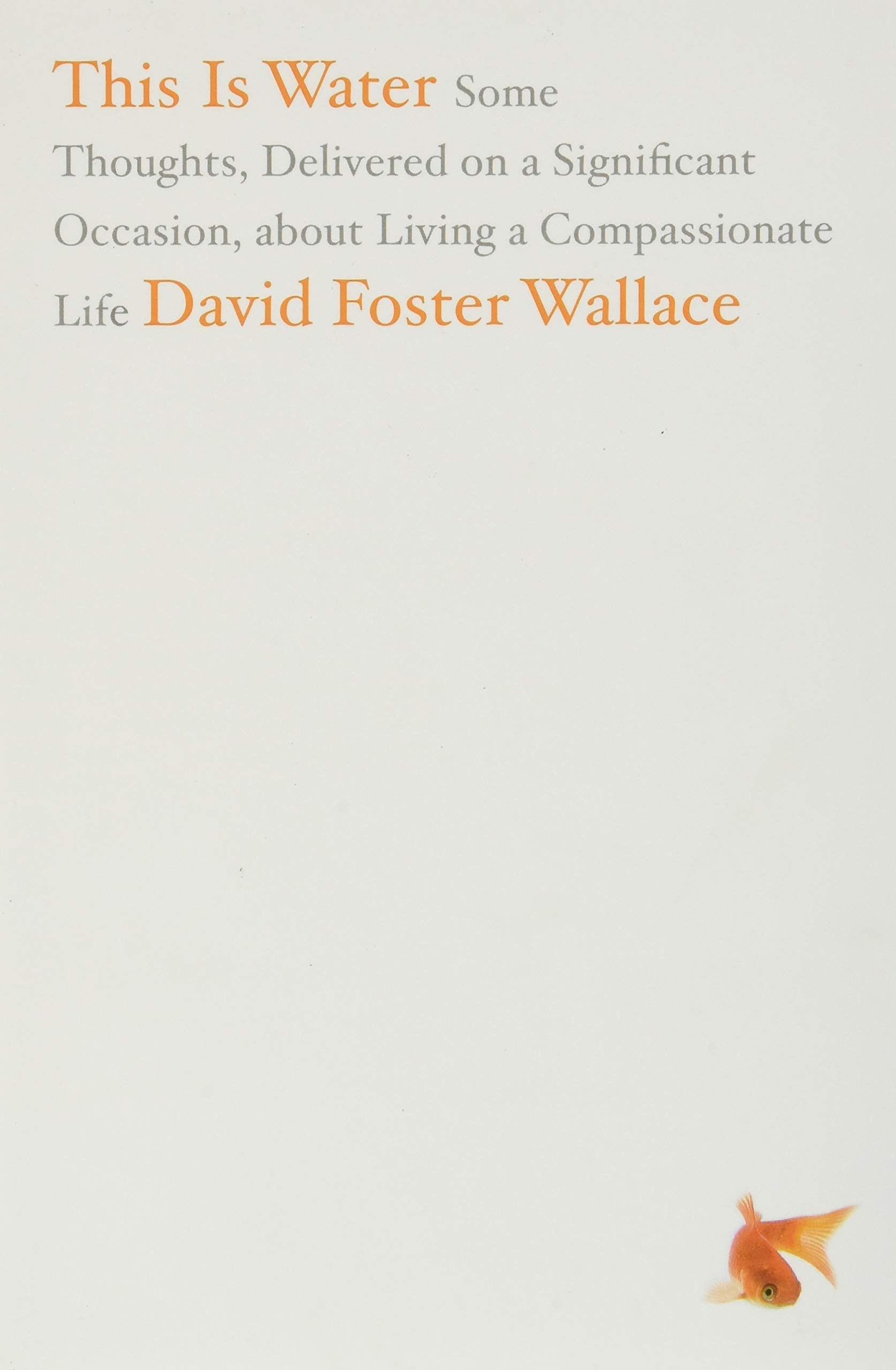
Notes on
This Is Water
by David Foster-Wallace
• 2 min read
There are these two young fish swimming along and they happen to meet an older fish swimming the other way, who nods at them and says, “Morning, boys. How’s the water?”
And the two young fish swim on for a bit, and then eventually one of them looks over at the other and goes, “What the hell is water?”
The immediate point of the fish story is merely that the most obvious, ubiquitous, important realities are often the ones that are hardest to see and talk about.
It means being conscious and aware enough to choose what you pay attention to and to choose how you construct meaning from experience.
This, I submit, is the freedom of real education, of learning how to be well- adjusted: You get to consciously decide what has meaning and what doesn’t.
The point here is that I think this is one part of what the liberal arts mantra of “teaching me how to think” is really supposed to mean: to be just a little less arrogant, to have some “critical awareness” about myself and my certainties… because a huge percentage of the stuff that I tend to be automatically certain of is, it turns out, totally wrong and deluded.
You can be so certain that you’re right that you don’t even entertain the possibility that you’re wrong
“Learning how to think” really means learning how to exercise some control over how and what you think.
It will actually be within your power to experience a crowded, hot, slow, consumer-hell-type situation as not only meaningful, but sacred, on fire with the same force that lit the stars — compassion, love, the subsurface unity of all things.
Liked these notes? Join the newsletter.
Get notified whenever I post new notes.